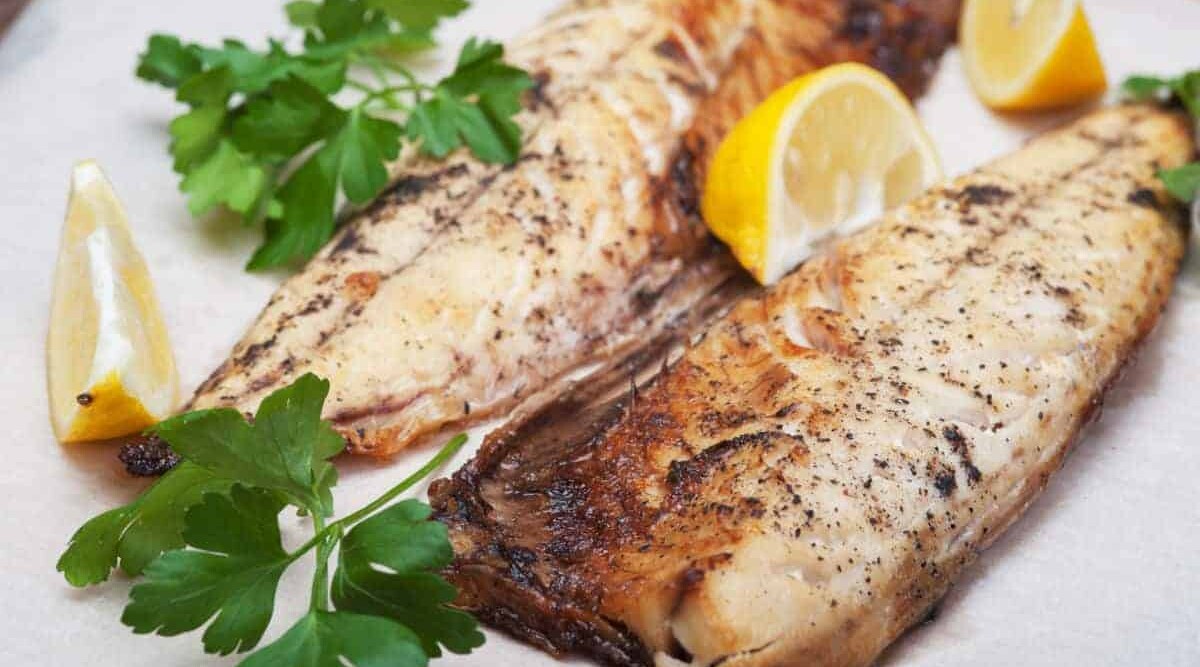
Broiling is one of those words I think sounds more like a mispronunciation of a word than a real word.
Most people will instantly say “You meant, ‘boiling’, right? Really hot water for tea?” No.
Even Grammarly, the popular grammar program, thinks I mean boiling. Seriously, it’s b-r-o-i-l-i-n-g. BROIL-ing. Broiling. It’s a real word describing a largely ignored cooking method. You’ve probably broiled before. Only you may have called it grilling or something else.
In this article, we’ll define broiling; explore its advantages, how it’s done, and the foods best suited to it. We’ll also consider safety, science and fun with appliances.
Perhaps, by the end of this article, you’ll have found your new go-to cooking method.
Jump to:
- 1 So What is Broiling? — A Definition by any Other Name
- 2 Broiling and Other Dry Heat Methods
- 3 Heat and Time
- 4 A Practical Path to Steak When the Grill is out of Reach
- 5 Is it Safe to Use a Glass Dish?
- 6 Broiler Mechanics 101
- 7 Down Under or Inside — Considerations for Your Next Purchase
- 8 There’s a Lot to Like About Broiling
- 9 Disadvantages of Broiling (With Workarounds)
- 10 Meats — What Works Best, What’s Unnecessary
- 11 Fish and Seafood Under the Heat
- 12 Fruits, Vegetables, and Mushrooms
- 13 Broiling Safety — Anticipate the Worst
- 14 How to Broil — Broiling Step-by-Step
- 15 Conclusion
So What is Broiling? — A Definition by any Other Name
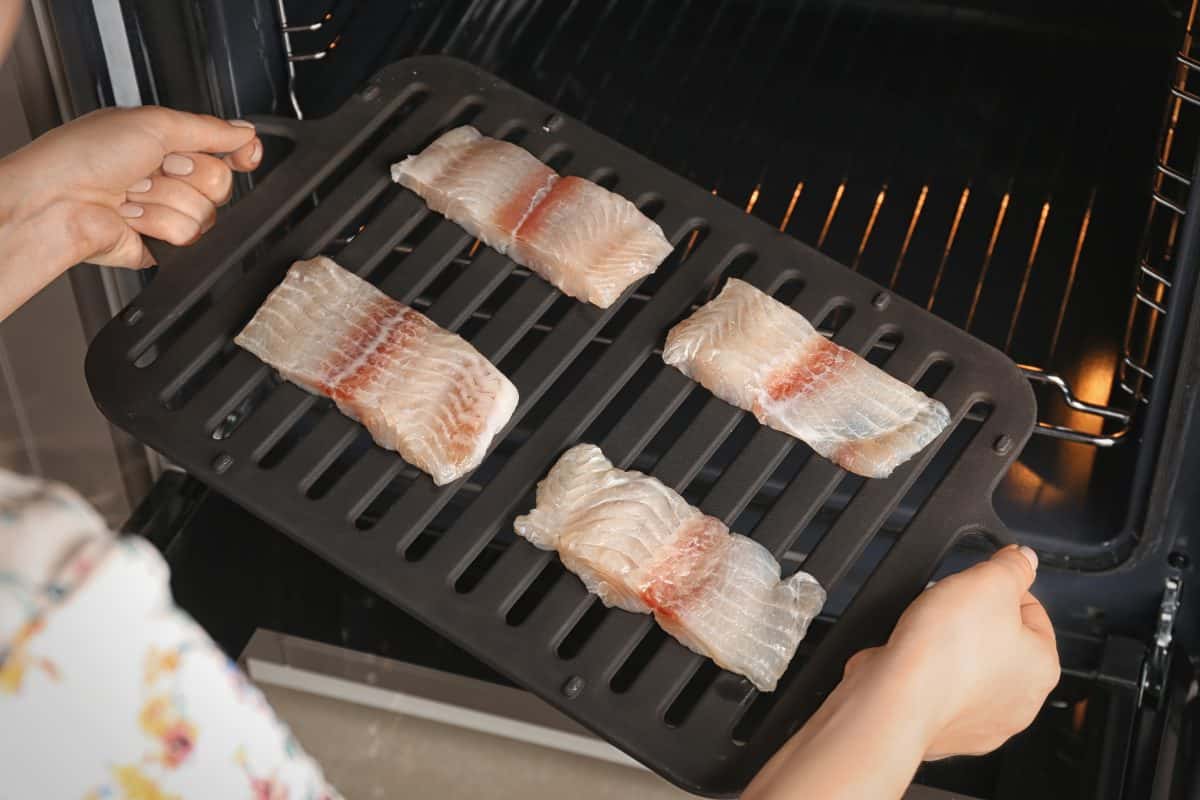
Transplanted Aussies, Brits or Americans often find the comforts of home can be found in their new home. They Just have to figure out what it’s called. Broiling is an excellent example.
As the helpful (and entertaining) chart at Seasoned Advice explains, “broil” in the US equals means to cook under a heat source. The technique is called “grill” in Australia and the UK, but in the US “grill” always means to cook over a heat source like a stovetop griddle, pan or a grill and is interchangeable with “barbecue”.
To add to the confusion, most dictionaries will unhelpfully explain that to broil is to cook under or over direct heat. Maybe they’re sensitive to the international culture since the method varies depending on where you are in the world.
For this article, we’ll go with the definition of broiling as: “A quick cook under high heat“
In this case then, it cannot be done on outdoor cooking equipment, as the heat always comes from below.
Broiling and Other Dry Heat Methods
Dry heat cooking is any type of cooking in which food is not immersed in water (like boiling). Broiling is a fast and hot method which can be used instead of or as a complement to one of several dry heat methods described by Livestrong:
- Barbecuing, an outdoor cooking method of preparing food over a wood or charcoal fire.
- Grilling, a cooking method done outdoors on a grill or indoors on a stovetop. Many consider the word interchangeable with barbecuing.
- Searing, a high heat stove-top method for creating a browned crust on food; it is sometimes used in combination with roasting.
- Roasting, a moderate heat oven method used for whole poultry, meats, or vegetables
- Baking, a moderate to high heat oven method for creating a new food by combining several foods, like a cake. But fish and poultry can also be baked.
When it comes to broiling, searing, and grilling:
- Food must be turned midway through the cooking process
- Food is cooked inches away from to a heat source
Heat and Time
- A typical broiler operates above 500 °F on residential ranges.
- Average time is 15 minutes or less, depending on the food and desired doneness.
- Broiled foods will continue to cook for about three minutes after being removed from the oven.
A Practical Path to Steak When the Grill is out of Reach
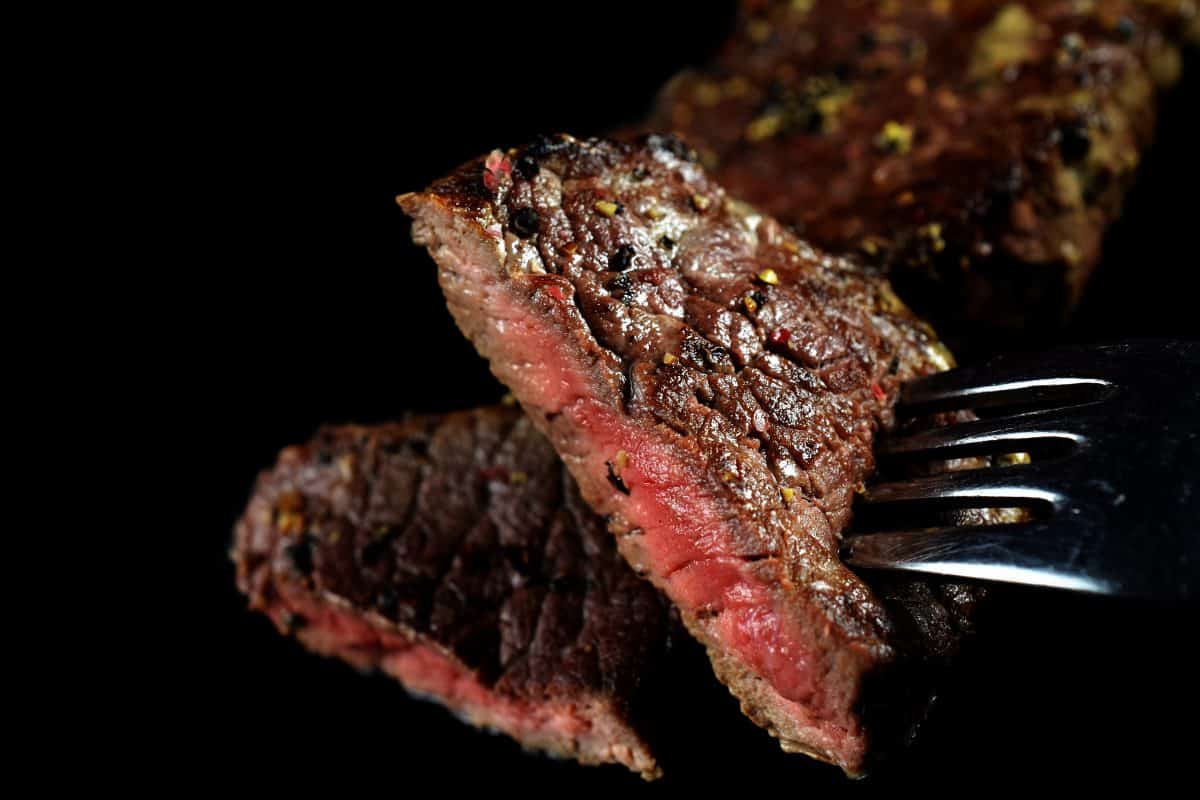
Broiling is the prime alternative when it’s not safe or practical to haul out the grill. Although one is heat above and the other heat below, the result is remarkably similar.
When it’s the dead of night, sub-zero or high wind weather, or a torrential rain outside, there’s no need to muster up boldness to go out there. You have all you need in your warm, nicely lit kitchen.
If you’ve found the need for a house security system, it really doesn’t make sense to disarm a portion of it, so you can stand shivering in the predawn night while your single steak is grilled.
Allrecipes provides a very descriptive tutorial on the essentials of broiling.
Is it Safe to Use a Glass Dish?
The obvious answer is no. But some will use it for a few minutes at a greater distance from the heat. That’s just right for putting a nice brown on a casserole. There is a danger of thermal stress — resulting from a rapid rise in temperature — causing the dish to break or crack.
Here’s a good time to employ common sense. If broiling becomes your new favorite cooking method, you’ll want to invest in a broiler-safe baking dish.
Broiler Mechanics 101
If you’ve ever wondered why your electric range has a heating element on the ceiling of the oven, it’s there for the sole purpose of broiling. You’ll note there is a broil setting on the control panel or dial of your range.
Nothing up there? You must have an older gas range.
Check the drawer at the bottom of the range. The one you thought you broke when you pulled it out and the door unexpectedly hinged down. Yeah, it’s meant to do that. If you’re really limber, you can get down far enough to see there is a burner on the ceiling of the compartment. See it?
The idea of fire raining down from there may cause some anxiety, but rest assured the fire only comes when the broil setting is chosen. It’s a good idea to minimize the use of the drawer for storage simply to reduce the risk of scraping the broiler element.
The odd-looking double pan combo that came in the drawer, the one with slits, is the broiler pan. It is designed to allow fats to be safely collected out of the way of the heat. If it’s missing, a baking pan and a rack to hold food an inch or so above the pan bottom will work just fine.
Welcome to a little-used staple of modern ranges.
Down Under or Inside — Considerations for Your Next Purchase
Someone decided the very bottom of a gas range was the ideal place for a broiling drawer. But as you look at it, you may visualize problems like:
- Practically standing on your head to retrieve food just cooked at +500 °F
- Juices which could slosh and burn (fingers, feet, other) on their way up from the floor
- Having to adjust the broiler pan just right, so it’s directly under the fire (look inside the oven, eyeball the flames, then position the broiler pan in the drawer.)
- Providing friends with a show as you ungracefully scramble up off the floor after having dutifully monitored the shrimp garlic bread to make sure it didn’t burn
Some new gas range models have broiler elements inside the oven, so if you’re not limber enough to love broiling, and you’re in the market for a new oven anyway, add the location of the broiler to your list of considerations.
There’s a Lot to Like About Broiling
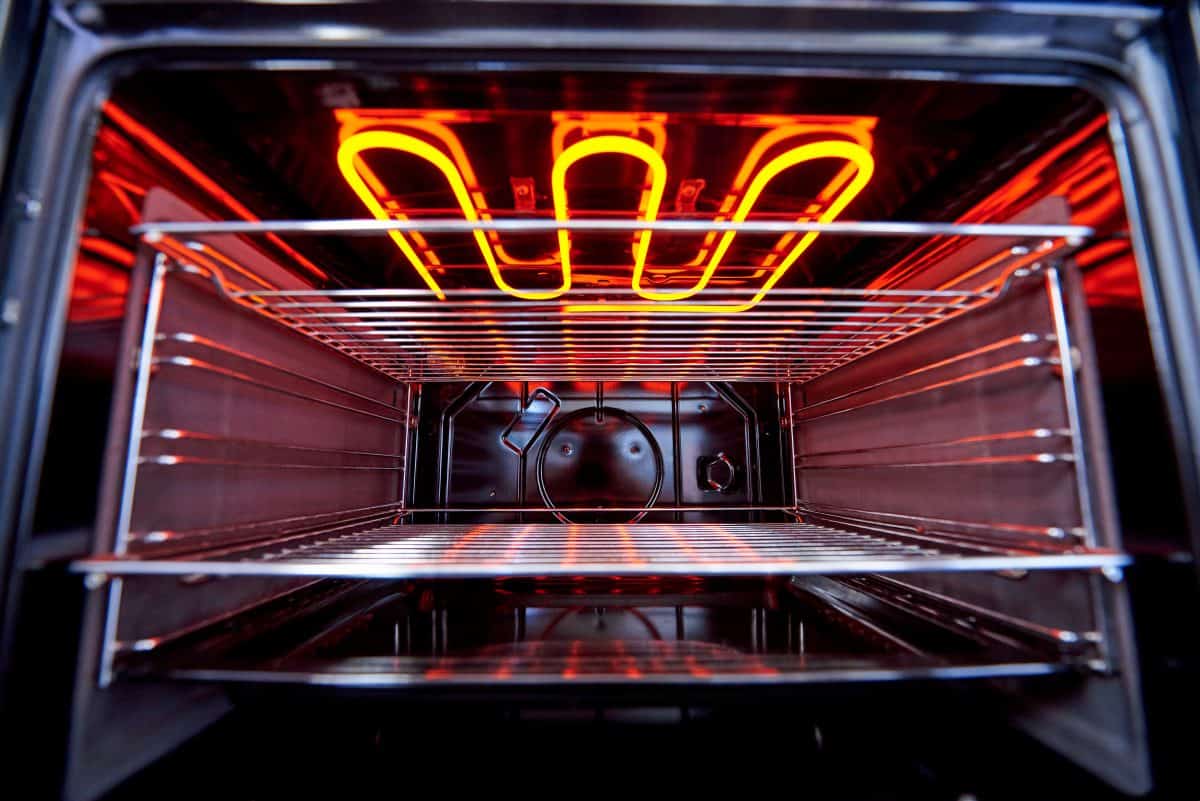
The American Heart Association considers it one of the healthier ways to cook since fat is drained away during cooking. Drippings can be replaced with low-sodium broth or a vegetable oil marinade. A few other advantages of this cooking method:
- No need to buy extra stuff you’ll have to find somewhere to store; every range has a broiler
- No need for wood chips, charcoal, or briquettes with their associated cost and storage issues
- Minimal cleanup, if you’re careful (got foil?)
- Fast, 15 minutes or less, cooking time
Disadvantages of Broiling (With Workarounds)
- Absence of wood and smoke taste (use a smoke seasoning)
- Imprecise oven temperature (use an IR thermometer)
- Uneven doneness (use a probe thermometer, adjust rack)
- Food can go from almost to burnt in a heartbeat (stay close; remove food a few minutes before completely done)
Meats — What Works Best, What’s Unnecessary
Meat should be lean and no more than 1½” thick. It can be marinated or not. For a rare steak, set the rack 3 inches from the heat; for a more thorough cook and nice caramelization, set it to 5 inches.
Serious Eats Managing Culinary Director and author, J. Kenji López-Alt, says: it isn’t necessary to let your steak come up to room temperature before cooking, so it cooks and browns evenly.
Fish and Seafood Under the Heat
Set the broiler pan 5 or more inches from the broiler to cook fish steaks and fillets.
Also, shrimp and shellfish are commonly broiled. For all, you’ll want to brush on a thin layer of oil or marinate ahead of time.
Fruits, Vegetables, and Mushrooms
Stone fruits (apples, nectarines, peaches), bananas, and pineapples are the usual choices for fruit. Vegetable choices include onions, peppers, asparagus, and zucchini. Brush or give a light spray with oil. Place the rack up to 8 inches away from the heat source.
Mushrooms offer a world waiting to be explored. Mostly you’ll find recipes for mushroom caps — big Portabello or regular button. If you’re a recipe adventurer, maybe you’ll be the one to create the next broiled mushroom masterpiece everyone will be sharing across social media.
Broiling Safety — Anticipate the Worst
The method isn’t complicated, but it may require a little more attention than most other types of cooking due to the excessive heat and fast pace. Sometimes, despite the most careful care, a fire can flare up. If this happens the main thing, of course, is not to panic.
Likely, your owner’s manual covers what to do in the event of a fire in or on your range. Turn off the broiler. Close the oven door if it isn’t already closed. Trust the fire will suffocate within the air-tight environment of the oven.
After an uneventful broiling session, have heat-resistant mitts ready and a dry, flat surface for the broiler pan. Other useful tools for broiling, just as for grilling: long-handled tongs for safely turning food and a probe thermometer.
How to Broil — Broiling Step-by-Step
There are few steps which you may rarely need to take with other types of dry heat cooking. Nothing complicated, just — A little attention to detail.
- While the oven is cold, measure the distance between broiling element and food. Especially if you’re working without a recipe, this is the most sensible time to figure out whether the food will be kissing the broiler or will be at a safe distance.
- Set oven rack. Based on food type, this can be from 3 to 8 inches from the broiler. Better Homes and Gardens had a chart, but the article offers great general information on distances.
- Preheat broiler. Some ranges may offer different broiling levels; choose according to food type or recipe.
- Carefully insert broiling pan with prepared food.
- Turn food midway through the cooking process. A minute or so after turning, insert a temperature probe to determine doneness.
- Remove and allow to sit 3 minutes or more to finish cooking.
Conclusion
Granted, nothing compares to the aromas and flavors of a (wood) grill. But we can’t always get what we want when we want, can we?
When you can’t grill, broiling is the next best thing. Even though there won’t be grill marks. Well, if you’re really talented, you could draw — No, enough already! You have caramelization, aroma, chew — the lack of grill marks is a small sacrifice you’ll just have to make.
Now you know what to do with the funny-hinged drawer at the bottom or the heating element on the oven ceiling, what are you waiting for? Will you go vegetarian first, or down to the sea?
Ah, I know — you’ll go straight for the classic grilling standard: a steak. Am I right? If you’re ready to venture into broiling, invite others to do the same by sharing this article.
Happy grilling! (Or in this case, broiling.)


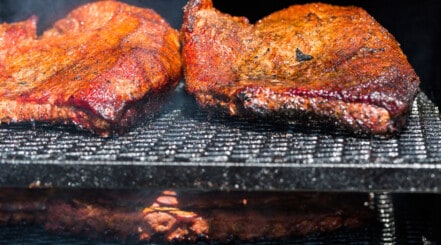
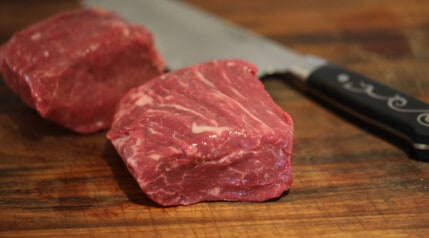
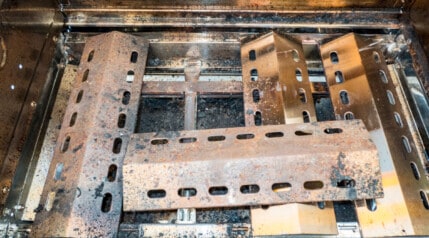
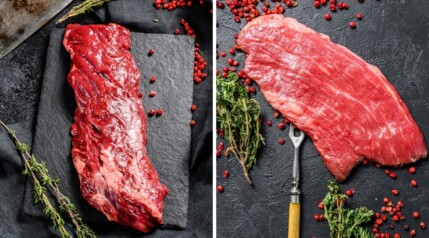
You are a good person. Honest, open and offering a clear and informative approach to the indoor grilling process. Well done! You desire a lot more credit for your informative and honest attempt to provide important and useful information to people who really just want honest and open help. Thanks, again and keep up the good work, it is appreciated by many who recognize your effort.
Thank you for the encouragement, much appreciated.